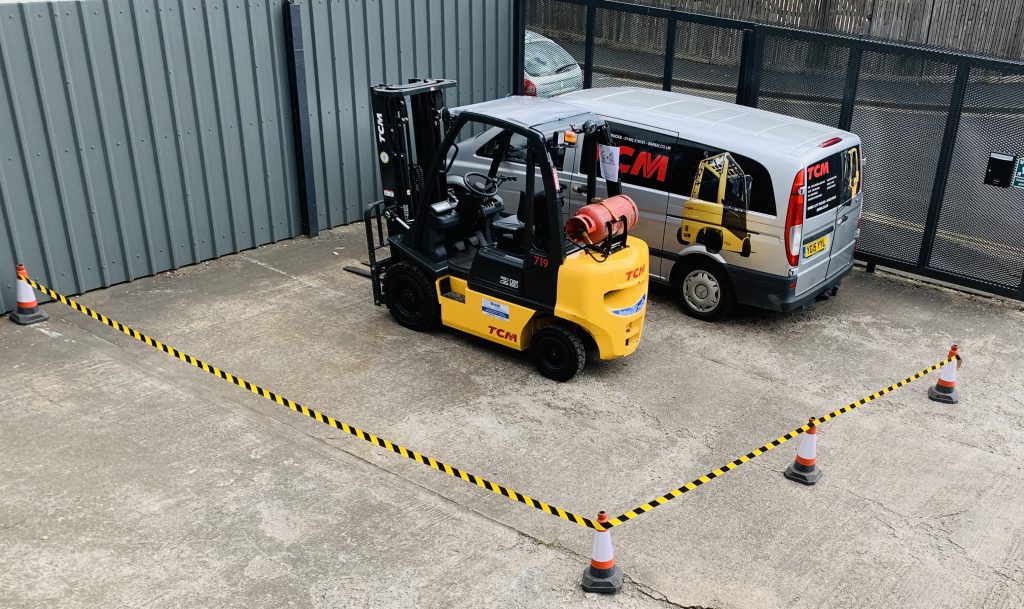
Just like drivers on the road, even the most careful forklift operator may encounter a bump or scrape at some point in their career. Unfortunately, in an environment such as a warehouse or busy yard, multiple hazards are potentially just around the corner and can be really serious.
From forgetting to check the battery at the start of a shift, to miscalculating the weight of a load, there are many mistakes that could be made each day. Sometimes human error is to blame, and sometimes it’s the machinery, but unfortunately, there are some mistakes that are always common in a logistics environment.
Therefore, here list some of the most common errors, along with advice on how best to avoid them moving forward:
Operating a forklift truck is a hazardous activity. Unfortunately, every year, numerous forklift accidents occur where a pedestrian is struck by a moving vehicle either on an aisle or in a yard. The best way to avoid this type of accident is to ensure that pedestrians are aware of your forklift by maintaining great communication. Working in specific forklift zones will allow pedestrians working nearby to anticipate your actions and stay clear.
It’s also vital that the forklift’s safety signs, sounds and light signals are all in perfect working order before use. There are lots of blind spots on a forklift, particularly when carrying loads so these signals, including the reversing sounder, are all essential so that other people around are aware of the forklift’s movements and manoeuvres.
A basic requirement of any forklift driver is that they should carry out their own thorough inspection of their truck before operating it. They should check the lifting equipment to ensure it is properly maintained for use – including a check of the lifting chains and slings, brakes and controls.
The truck should also have a certificate of Thorough Examination in line with the LOLER regulations. A Thorough Examination must be carried out at least once a year, but this could be more depending on what kind of trucks you are running. The CFTS offer a handy online calculator to help you find out when your next Thorough Examination is due. If there is a problem with the truck, a thorough inspection can identify a problem that could have very serious consequences.
Inspections need to be carried out with a detailed knowledge of what to look for, via an accredited supplier. You can read more about this in our recent article here.
To the outsider, operating a forklift may seem pretty straightforward. But, any experienced driver will tell you that it isn’t! There are numerous blind spots that make even simple manoeuvres pretty complicated.
Therefore, many experienced operators work with a qualified signaller, who can direct the driver with hand signals, and let them know if they are approaching a hazard. They can also be aware of pedestrians in blind spots or help to navigate and lift a load safely. Assistance when working with loads can significantly increase safety and reduce the number of accidents occurring as a result of poor communication.
Forklifts trucks are not designed for speed. Their unstable nature, especially with a heavy load, means they can easily tip over if driven too fast.
A forklift truck should always be driven at a responsible speed, but especially when working in close proximity to pedestrians or other vehicles in a restricted space. It can be tempting for even the most experienced of drivers to speed up to get a job done more quickly, but driving a forklift truck at speed can cause serious accidents and even death. So, it’s just not worth the risk.
The forklift used should always be fit for the task at hand. The most important thing to check is that it has the truck has the weight capacity to handle the load you need to move. especially if the loads are heavier than normal.
It’s a very common error to overload a forklift. But, this can result in the forklift tipping up, risking the safety of the operator and those working nearby. It can also cause damage to stock, the vehicle and the surroundings – which can be costly. Knowing the vehicle’s capacity is vital to safe operation.